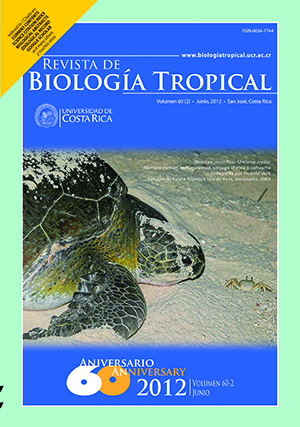Abstract
El Niño Southern Oscillation (ENSO) has generated global coral massive bleaching. The aim of this work was to evaluate the massive bleaching of coral reefs in Puerto Cabello, Venezuela derived from ENSO 2010. We evaluated the bleaching of reefs at five localities both at three and five meter depth. The coral cover and densities of colonies were estimated. We recorded living coral cover, number and diameter of bleached and non- bleached colonies of each coral species. The colonies were classified according to the proportion of bleached area. Satellite images (Modis Scar) were analyzed for chlorophyll-a concentration and temperature in August, September, October and November from 2008-2010. Precipitation, wind speed and air temperature information was evaluated in meteorological data for 2009 and 2010. A total of 58.3% of colonies, belonging to 11 hexacoral species, were affected and the greatest responses were observed in Colpophyllia natans, Montastraea annularis and Montastraea faveolata. The most affected localities were closer to the mainland and had a bleached propor- tion up to 62.73±36.55%, with the highest proportion of affected colonies, whereas the farthest locality showed 20.25±14.00% bleached and the smallest proportion. The salinity in situ varied between 30 and 33ppm and high levels of turbidity were observed. According to the satellite images, in 2010 the surface water temperature reached 31oC in August, September and October, and resulted higher than those registered in 2008 and 2009. Regionally, chlorophyll values were higher in 2010 than in 2008 and 2009. The meteorological data indicated that precipitation in November 2010 was three times higher than in November 2009. Massive coral bleaching occurred due to a three month period of high temperatures followed by one month of intense ENSO-associated precipitation. However, this latter factor was likely the trigger because of the bleaching gradient observed.Comments

This work is licensed under a Creative Commons Attribution 4.0 International License.
Copyright (c) 2012 Revista de Biología Tropical
Downloads
Download data is not yet available.






